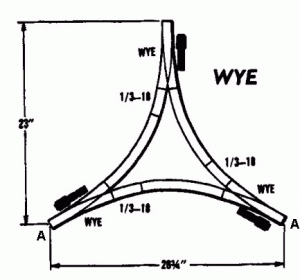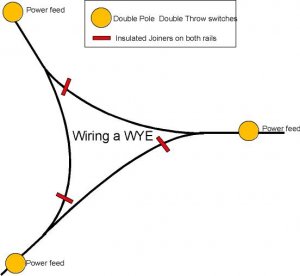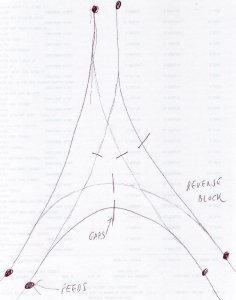I think the simplest approach is to use DCC (you mentioned it afterall) and Atlas turnouts. You would need insulated joiners on all three of the "inner" rails of the wye. That is, between frogs. One leg of the wye, usually a stub ended one but selection would depend on situation, is chosen for the reverse block. It is gapped on BOTH rails. It's two rails are connected to a reverse module, which in turn is connected to the DCC track buss. Feeds to the track buss from the point side of all the turnouts will power all the routes. I think the Atlas are good turnouts, particularly for beginners. Peco Insulfrogs would work the same. Come to think of it, Electro frogs wouldn't require any special attention here. Keep in mind the only "problem" with Electro frog (Peco as well as Shinohara, etc.) is that track power should never come into the turnout from the frog end. So gaps on all frog rails are required, and extra feeds are required for resultand dead spots. The gaps are needed in this case anyway. The big differance with DCC is NO SWITCH WIRING, or throwing. Here is a quick and dirty sketch of the gap and feed requirements.
 )
) Val
Val







